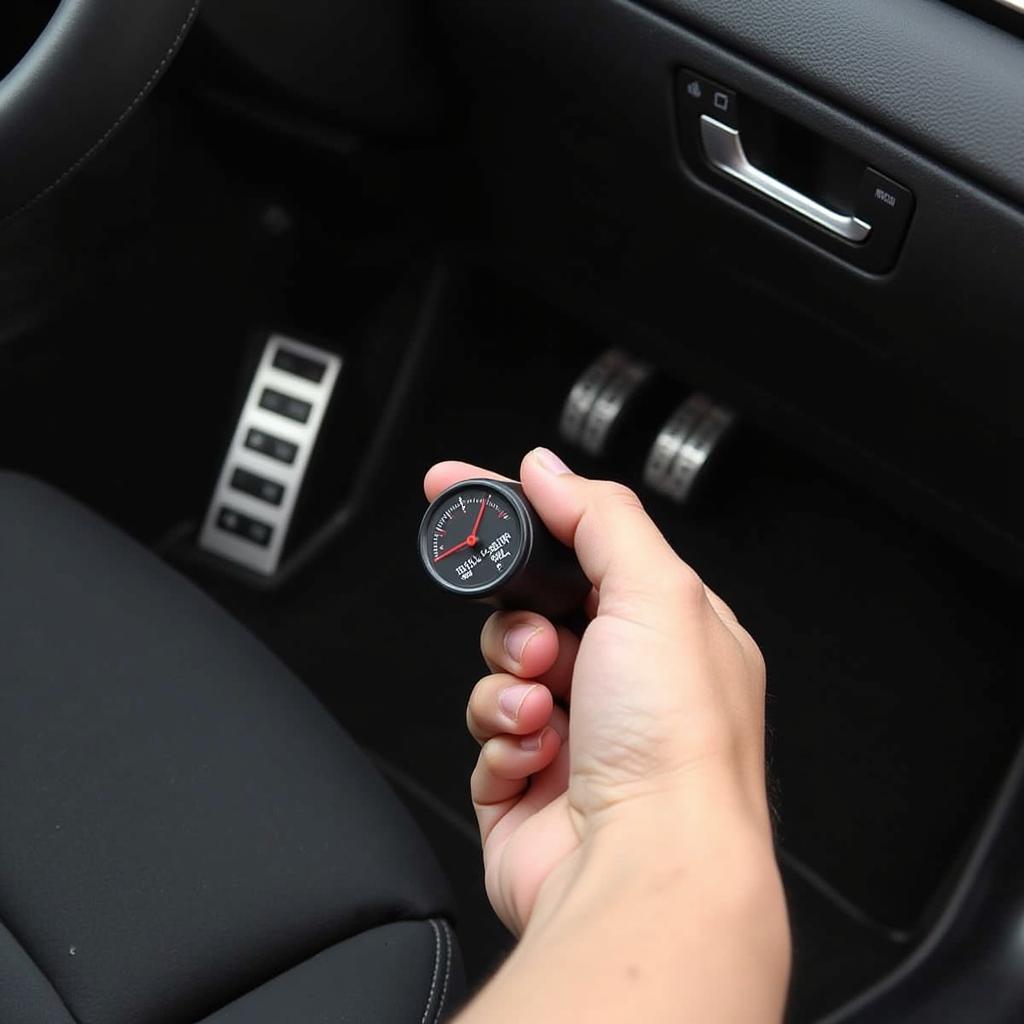The Tesla Model 3 passenger seat belt warning is a crucial safety feature designed to ensure all occupants are properly secured. However, encountering this warning when you believe the seat is empty can be perplexing. This comprehensive guide delves into the common causes of this issue, troubleshooting steps, and potential solutions, empowering you to address the problem effectively.
Understanding the Seat Belt Warning System
Your Tesla Model 3 utilizes advanced sensors in the passenger seat to detect the presence of an occupant and ensure their safety. When the vehicle is in motion and the seat belt is unbuckled, these sensors trigger an audible chime and a visual warning on the touchscreen display.
While this system is highly effective, certain situations can lead to a false warning, even when the seat appears empty. Let’s explore these scenarios and their potential solutions.
Common Causes of a False Passenger Seat Belt Warning
- Object on the Passenger Seat: Even a seemingly light object, such as a bag, laptop, or grocery bag, can trigger the weight sensor. Always remember to remove all items from the passenger seat before driving.
- Sensitive Weight Sensor: In some cases, the passenger seat weight sensor may be overly sensitive, triggering the warning even with minimal pressure on the seat.
- Software Glitch: Like any software-driven system, the Tesla Model 3’s seat belt warning system can occasionally experience glitches or errors.
- Faulty Seat Sensor: While less common, it’s possible for the seat weight sensor itself to malfunction, leading to a persistent false warning.
Troubleshooting Steps for a Persistent Warning
If you encounter a persistent passenger seat belt warning when the seat is empty, here are some steps to troubleshoot the issue:
- Double-Check the Seat: Thoroughly inspect the passenger seat to ensure there are absolutely no objects, even small ones, resting on it.
- Fasten the Seat Belt: As a temporary measure, you can fasten the passenger seat belt to silence the warning. However, this is not a permanent solution.
- Reboot the Touchscreen: Try rebooting the touchscreen by holding down both scroll buttons on the steering wheel until the screen goes black. This can resolve minor software glitches.
- Schedule a Service Appointment: If the issue persists after attempting these troubleshooting steps, it’s recommended to schedule a service appointment with Tesla. A technician can diagnose the problem and perform any necessary repairs or recalibrations.
Remote Diagnostics and Software Updates
Tesla’s remote diagnostics capabilities allow technicians to analyze vehicle data and often identify the root cause of issues like a false passenger seat belt warning. In some cases, a simple software update, which can be installed remotely, may resolve the problem.
By leveraging Tesla’s remote diagnostics and over-the-air software updates, you can potentially address the passenger seat belt warning issue without even visiting a service center.
Expert Insights
“We often see cases where a simple software recalibration resolves seat sensor sensitivity issues,” says Sarah Thompson, a senior Tesla technician. “Tesla’s continuous software updates often include improvements and fixes for these types of common concerns.”
tesla seat belt warning recall
Conclusion
The Tesla Model 3 passenger seat belt warning system is a vital safety feature, but false warnings can be frustrating. By understanding the common causes and following the troubleshooting steps outlined in this guide, you can often resolve the issue quickly.
Remember, if the warning persists, don’t hesitate to contact Tesla for professional diagnosis and support.
FAQs
Q: Can I permanently disable the passenger seat belt warning?
A: No, for safety reasons, you cannot permanently disable the passenger seat belt warning system.
Q: Will a software update always fix a false passenger seat belt warning?
A: While software updates can resolve some sensor-related issues, a persistent warning may require further diagnosis by a Tesla technician.
Q: Does the Tesla Model 3 have a weight sensor recall?
A: Tesla has issued recalls in the past for specific seat belt-related issues. You can check for recalls using your Vehicle Identification Number (VIN) on the Tesla website or the National Highway Traffic Safety Administration (NHTSA) website.
Q: How much does it cost to replace a faulty passenger seat weight sensor?
A: The cost of replacing a passenger seat weight sensor can vary. It’s best to contact Tesla service for an accurate estimate.
tesla car seat seat belt warning uk
Q: Can I clean the passenger seat sensor myself?
A: It’s generally not recommended to attempt cleaning the sensor yourself, as this could potentially damage it. Consult with a Tesla technician for guidance.

